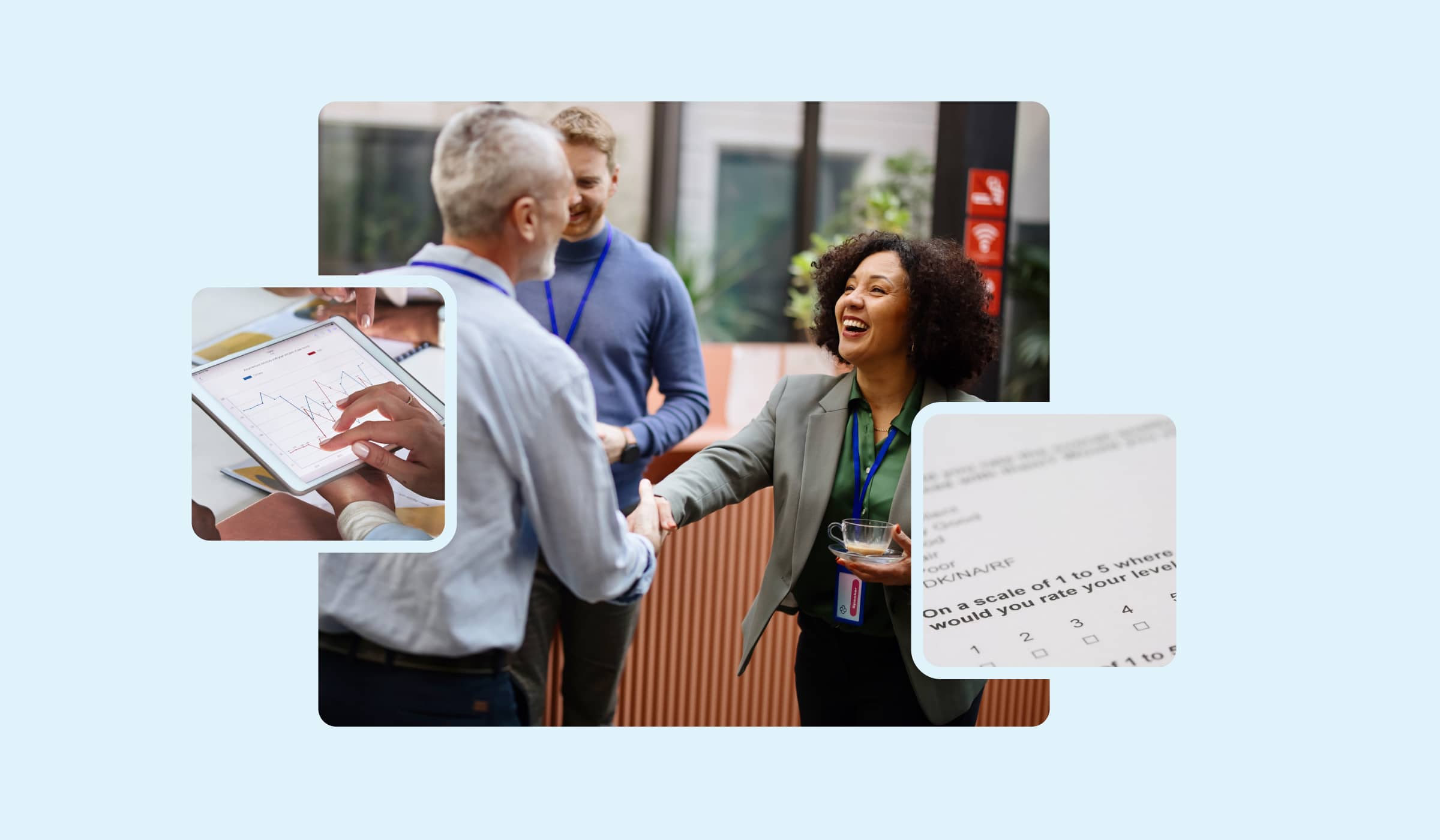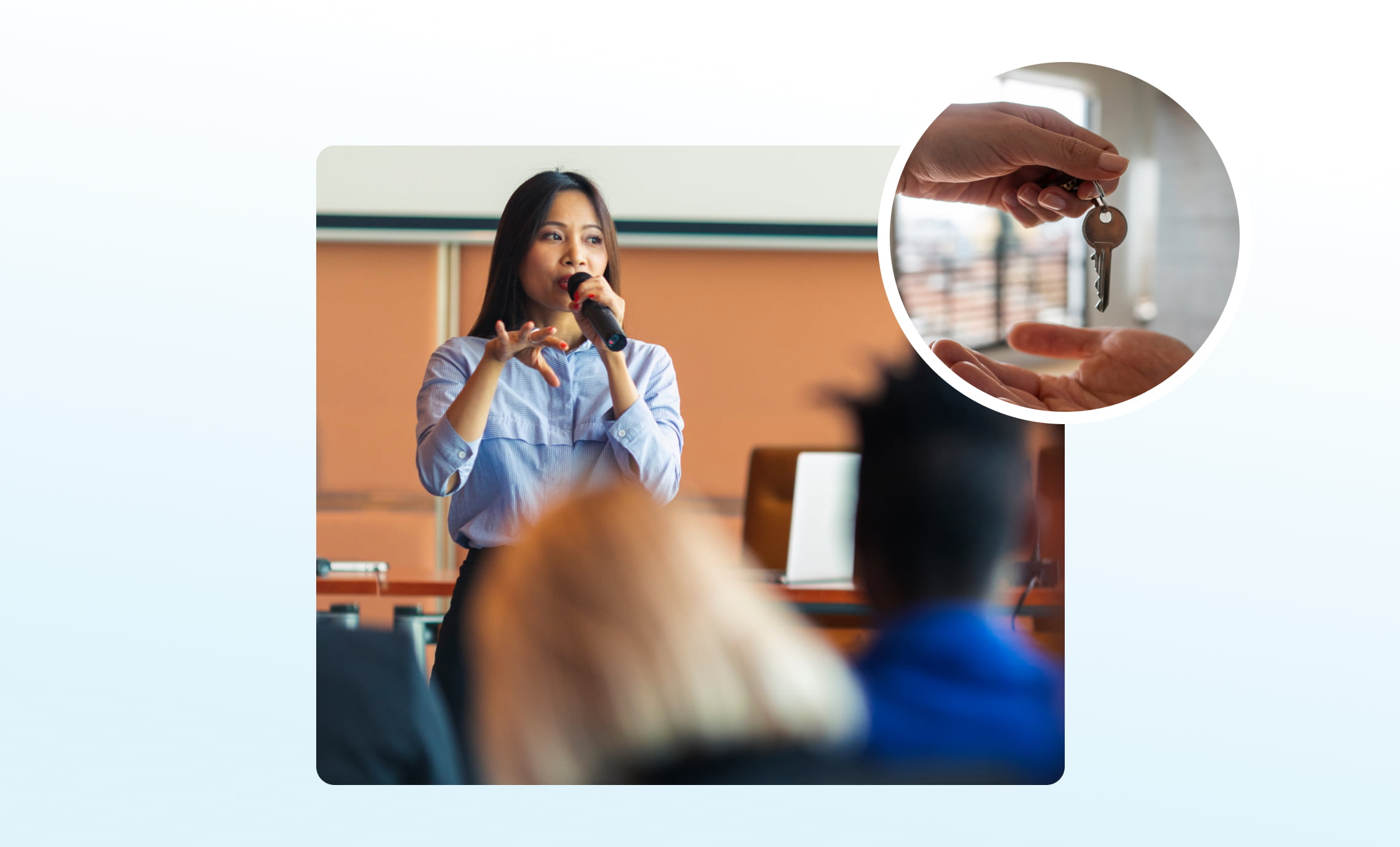How do you gauge the success of your event? Do you know which areas of your lecture were strong and which areas need improvement? How can you measure the satisfaction of your attendees and the effectiveness of your keynote speaker?
As an event planner or conference organizer, these questions are important to ask so you can enhance your future events and make them more meaningful. But while there are various criteria and standards by which to answer these questions, there’s one solution we want to focus on: customer feedback.
Customer feedback is the insight, issues, input, and information shared by your community, audience, or attendees. It encapsulates their thoughts and experiences during the event regarding your product, service, or brand. You can gain substantial data from customer feedback which can guide you to make further improvements and empower positive changes in the future.
Identifying the importance of gathering customer feedback
You may be wondering: why is customer feedback important? The importance of customer feedback is its ability to serve as a guide for your company’s growth.
Customer feedback reveals what went right or wrong at your event
When it comes to customer feedback, there are two kinds you need to pay attention to: positive and negative feedback. On the one hand, positive feedback sheds light on all the good things that happened during your event that you can use as a recipe for success in the future.
On the other hand, negative feedback sheds light on other aspects of your event that didn’t quite meet the audience’s expectations. This could relate to the type of speaker you onboarded for the event or the activities you had on the ground. In any case, negative feedback shows you what you need to improve in the future to create a better and more memorable experience for your attendees.
Use customer feedback to evaluate whether you achieved your goals
Before organizing an event or conference, you must already have business goals in mind. You may have a target goal for the number of attendees and their levels of engagement, exposure, or conversion. Since some of these goals can be subjective, you need to implement something concrete to gauge whether or not you’ve achieved your objectives. This is where customer feedback is crucial.
Customer feedback can help you obtain insights that pertain to a specific goal. Some feedback can contain information about how engaged your attendees felt during the event or how satisfied they were after it ended. Other feedback can tell you how likely they are to join your next event. With this data on hand, you are more equipped to conclude whether you have achieved a particular goal or not.
Understand your attendees’ needs by analyzing customer feedback
Remember that the foundation of your event is your audience, or attendees. Their presence and participation can make a world of difference, and they have the power to make your event a success or not. It’s vital to understand their needs and address their concerns during your conference.
Although market research can give you a glimpse into your target market’s behavior, wants, and needs, it’s not necessarily specific enough to your particular attendees. What better way to get actionable information than from the source itself?
When you collect customer feedback, you’ll find that many customers share their concerns as well as wishes for future events. This allows you to understand your ideal audience on a deeper level in order to give them exactly what they’re searching for the next time
Keep clients and audiences coming back by mining customer feedback for actionable insights
As much as customer feedback is for your benefit, it also works to the advantage of your clients and audiences.
Audiences participate in your event because they want to be involved. Whether that involvement means obtaining new knowledge about a technical topic or gaining valuable experiences to aid them in their careers, they register for your conferences to gain something from them.
Besides your keynote presentations and on the ground activities, another way you can add value to the experience is by giving your attendees the voice and opportunity to share their thoughts. Take the time to make sure your attendees feel valued and heard. As a result, they will be more likely to participate in your future events.
Customer feedback should fuel future events
Ultimately, getting customer feedback is like collecting data, which you can look back on to see your strengths and weaknesses. By evaluating these different components, you can determine what elements work and what elements don’t. In future events, you have a better idea of what your audience wants to see from your brand. Then, you can focus on giving them what they want by organizing an event that caters to their needs.
By consistently leveraging customer feedback, you will see impressive progress and evolution in your event strategy and results.
Setting up customer feedback collection
Let’s tackle some ways to gather customer feedback. Collecting this data may sound straightforward, but there is a lot that goes into it logistically. Especially if you expect thousands of attendees to participate in your lecture, addressing such many people can be overwhelming and challenging. That’s why Attendee Interactive has created an innovative solution for you.
Instead of manually collecting customer feedback sheets at the venue, we have the technology to make this task easier and more convenient. If you want to know how to set up your customer feedback collection system, here are the steps you need to take.
Establish your goals
First and foremost, you need to understand what your event goals are so you can focus your feedback forms to address specific objectives. For instance, if one of your goals is to measure the engagement of your attendees, you can provide prompts to make them share their thoughts and personal experiences.
However, if your goal is more focused on assessing the effectiveness of your keynote speaker, you can provide a rating system where attendees can “grade” the speaker based on their presentation.
Setting up your goal will be the foundation of your feedback forms, so be as specific with your questions as possible.
Design effective feedback forms
The next step is to design an effective feedback form. The design of your form will encourage attendees to respond; conversely, a clunky or complicated design will dissuade them from doing so. Solicit more responses by creating a design that’s straightforward and appealing.
While you may want to get as much information as possible, some people don’t have the time to answer a long and comprehensive feedback sheet. To motivate more people to fill it out, make the format and design short and sweet.
For example, if you have more than 10 questions, format them with “yes or no” responses. This will make it easier for your attendees to answer, even if they are in a rush or don’t have a long time to answer the survey.
In line with this, keep the questions as simple as possible. When attendees see lengthy text, they may feel overwhelmed, which will only dissuade them from answering.
Determine the appropriate rating scales
Aside from yes or no questions, there are several ways for you to obtain feedback from your audience. You can create a rating system from one to five, one being the lowest rating and five being the highest, to gauge customer satisfaction or how effective certain aspects of your program were.
Another rating scale you can explore is long-form answers. This is best suited if your goal is to gain subjective and detailed feedback from your audience.
To make your feedback form more interesting and dynamic, you can integrate multiple rating systems in your template. This will give you more answer variety, especially when you consider that some attendees will prefer one format over another. Ultimately, diversifying your customer feedback types will shed light on a wide range of topics.
Determining the appropriate rating scales will depend on your goals, as well as the type of event and audience you host. It’s best to study all these components rigorously to strategize the best way to approach a specific scenario.
Personalize the experience
While a template can make it easier for you to reproduce customer feedback forms in the future, it’s not a one-and-done solution. To make your feedback system effective across different events and audiences, you need to make space for personalization.
Yes, a template can serve as your basis. But make sure to modify the format and the questions to fit your specific event needs. Considering how technology is continuously evolving, making the necessary changes to ensure feedback is interesting and immersive supports audience engagement.
Our team at Attendee Interactive has developed a comprehensive, flexible, and scalable event management solution so you can stay on top of your events and your customer feedback. We have the tools you need conveniently stored in one platform so you can benefit from the seamless ability to organize your conferences and maximize the results.
Collecting customer feedback during your events: 6 Methods
At this point, you should have your feedback forms up and ready. The next step is to distribute them using the right channels to isolate the right data. This is where it gets a little bit tricky because there are numerous ways to get customer feedback. You may need to go through a trial-and-error period to find out which methods work best for you.
That said, take a look at six tried-and-tested approaches to collecting customer feedback.
1. Email and contact forms
One of the traditional methods of customer feedback collection is to send out your forms via email. This is especially useful if you have the contact list of all the attendees because sending an email is one of the most direct ways to reach out to them.
Although it’s easy to send out your customer feedback forms, it’s not as simple to get a reply. If you want to increase your likelihood of hearing back from your customers, here are two things you can incorporate into your email.
- Set explicit expectations: Often, customers don’t feel the need to answer feedback forms because they don’t think they matter. One way to change this mindset is to share your objectives with them. Once they have a better understanding of why you may need their responses, they will be more inclined to participate in your feedback program.
- Forward personalized responses: If you want a candid response from your customers, you need to be more personal with them by sending a one-on-one request or creating a customized auto-responder email. These will help you build a connection with them and further persuade them to participate in your feedback collection.
2. Usability testing
If your event is focused on launching a particular product or service, you can select a group of participants to test the product on the spot. Once they’ve accomplished this, they can share their thoughts and reviews with you by answering a survey. This method is known as usability testing.
Instead of targeting thousands of people, you can have a focused selection of people who can give you in-depth information on a particular product or service. Even if the quantity of feedback is limited, the quality is there.
3. Customer interviews
If you’re looking for a more direct approach to obtaining customer feedback and getting immediate responses, a good way to do so is with customer interviews.
Reaching out to customers directly via phone or personal appearance can help you open up conversations with them and get their thoughts on your event, product, or service on a more natural and candid level.
They can even share personal stories that they otherwise might leave out in online surveys or offer nuanced ideas for future events.
If you want to conduct an effective customer interview, here’s what you need to do:
- Start with an open-ended dialogue to encourage an honest conversation
- As the interview progresses, focus on more specific questions
- Always practice active listening
It’s not enough to have the right questions on hand. You also need to have a good listening ear to catch all the important details, including what’s not said.
4. Social media and website
The power of social media exceeds brand awareness. It also allows you to connect and engage with your audience well past the event. If you want to consistently obtain customer feedback, you need to be active on social media.
You can develop content on your website and social media platforms to get your audience to share their thoughts. With these channels, you can promote your feedback forms to a wider range of people, but you’re not necessarily guaranteed a response.
If you want to increase your chances of getting answers, an effective digital marketing strategy is incentivizing your followers. For example, the incentive if they answer your online forms via website or social media could be that you enter their names in a raffle to win a sought-after giveaway. This will get them interested in your post and more people will feel inclined to participate.
5. On-site activity
If you need to obtain data immediately and cannot wait until the end of the event to do so, an alternative is to create an on-site activity. Think of this as the IRL (in real life) counterpart to your social media efforts.
You can also incentivize your audience on the event day to increase your chances of getting responses. After answering your survey or interview questions, they can get freebies and exclusive promos from your brand or sponsors. Before you know it, you’ll have a line of interested participants waiting to share their feedback.
6. Event apps
In relation to the previous point, you can convert your on-site activity to a digital one on the day of the event. Rather than having a dedicated booth to gather customer feedback, you can encourage your audience to use the event app to share their thoughts. This way, the process is more streamlined and straightforward. They won’t need to wait in line; instead, they will have the flexibility to answer the questions in their own time.
If you want to create an event app that’s specific to your event goals, look no further than Attendee Interactive. We have event management solutions that provide multiple conference or event support systems to meet your diverse needs. From creating a customer feedback form to launching it on the big day, we have the tools to help you carry out even the most complex logistical tasks.
Analyze customer feedback
Knowing how to get customer feedback is not the end goal. More importantly, you need to know how to analyze customer feedback so you can make the appropriate changes in your future events. To help you in this endeavor, here are some strategies you can explore.
Categorize your data
After collecting customer feedback, you need to divide it into respective categories so you can sift through the data more easily. You can categorize feedback in terms of type (positive, negative, or neutral) or theme (stories, mentions, or ratings).
Focus on trends and themes
Once you’ve organized the data into its respective categories, the next step is to search for recurring trends or themes. Do you see more positive or negative responses? Do you see similar opinions from various customers? Are your customers talking about the same topics? These are essential questions to ask because they reveal your target audience’s concerns and what they want to see in the future.
Prioritize issues to finesse for the next event
When it comes to customer feedback analysis, focusing on the negative input is just as important as focusing on the positive — if not more so. While positive feedback gives you an idea of what your customers appreciate about your event, negative feedback sheds light on what needs improvement. Addressing the source(s) of negative feedback will take more time and effort on your part. But once you find ways to resolve these issues, you’re sure to create a memorable experience for your audience in the next event.
Customer feedback for the win
Although you have several strategies to collect customer feedback, doing so during an event is one of the best ways to get the information you need on the spot. Fortunately, soliciting instant customer feedback is not as tedious as it once was.
With the help of event technology, obtaining customer feedback is easier than ever. You can integrate a shared app that allows your customers to submit feedback so that you can analyze it. Through a centralized platform, you can rest assured that this data will be safely and securely stored.
With this data on hand, you now have the power to create better event experiences in the future for all your customers to enjoy.
If you need an efficient way to collect customer feedback for your events, reach out to our team at Attendee Interactive. We have a host of solutions for a variety of industries and would love to help you create the best events possible!


